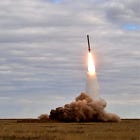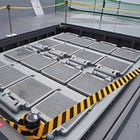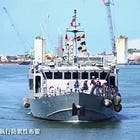According to Taiwanese media, Taiwan’s future 6,000-tonne displacement destroyers will be configured to launch Taiwanese-made HF-2E subsonic land-attack cruise missiles from American-made Mark 41 vertical launch system (VLS) cells. The HF-2E, which is one of several publicly known long-range strike munitions in Taiwan’s arsenal, is an extended-range subsonic land-attack cruise missile derived from the subsonic HF-2 anti-ship cruise missile.
Irrespective of the probable penetration rate for the subsonic HF-2E land-attack cruise missile amid the ongoing modernization of the People’s Liberation Army’s (PLA) air defence capabilities, this is a questionable move on the part of the Taiwanese navy. A finite number of VLS cells can be installed on any warship, and Taiwan’s warships are fully exposed to China’s increasingly formidable maritime strike capabilities, which peak in terms of quality and quantity within several hundred kilometers of the Chinese coastline. Simply stated, the VLS cells on future Taiwanese warships will have to be maximally loaded with surface-to-air missiles of various types, including ballistic missile defence-capable surface-to-air missiles, if these warships are to survive the opening hours of a war. Taiwanese warships will also need to load some of the VLS cells with standoff rocket-boosted anti-submarine homing torpedoes. There will, as such, be few VLS cells to spare, not least in a context in which only a small subset of the Taiwanese surface fleet will be composed of this future 6,000-tonne displacement destroyer design, a small subset that will have to provide long-range air defence capabilities for the rest of the Taiwanese surface fleet.
All things considered, Taiwan is best off with deploying HF-2E and other strike munitions with mobile ground-based launchers that can be driven around the island. With Taiwanese warships being unlikely to operate more than 100-200 kilometers from the island of Taiwan in a crisis or war, the de facto range extension provided by a mobile forward launching position is of fairly limited importance. Taiwan risks making the mistake that Russia made with the so-called “Kalibrization” of the Russian surface fleet over the 2010s, which resulted in the absurd manner in which Russia has employed sea-launched 3M-14 land-attack cruise missiles over the course of the Russia-Ukraine War. The relevant Russian surface ships and submarines of the Russian Black Sea Fleet leave port, launch a handful of 3M-14 land-attack cruise missiles, and immediately return to port to rearm (provided that reloads are available). Unlike Russia, Taiwan cannot realistically expect to have its warships return to Taiwanese ports in wartime so as to rearm. Even Taiwan’s east coast ports are highly vulnerable to Chinese terrestrial strike and maritime strike capabilities.
Some relevant posts:







